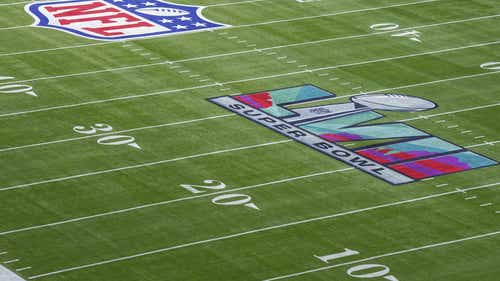
On the outside looking in: How non-Power 5 players are woefully overlooked
College football fans are usually down for a good debate, and conference rankings are always a tantalizing topic.
The SEC, Big Ten, Big 12, Pac-12 and ACC, dubbed the "Power 5," are considered to be the best college football conferences — and for good reason. Time and time again, athletes from these conferences consistently perform at the highest level by the time they reach the NFL Draft.
A total of 65 schools make up the Power 5 conferences, and then there are the lesser-acknowledged Group of 5 conferences: the American Athletic Conference, Conference USA, Mid-American Conference, Mountain West Conference and Sun Belt Conference.
Power 5 schools attract, unsurprisingly, the most highly-recruited players, but does drafting a player from one of those programs – rather than a player from one of the smaller schools – mean guaranteed success?
Not necessarily. Just take a look at how the past five NFL Draft classes have fared.
Since 2016, 145 first-round picks were from Power 5 schools (plus Notre Dame, which is independent in football), and 38 of those players have gone on to make at least one Pro Bowl. From non-Power 5 schools, only 14 athletes were selected as first-rounders, with three of those 14 making it to a Pro Bowl.
At first glance, it seems like no contest, but when you look closer, the numbers tell a different story.
By proportion, 21.4% (three of 14) of the non-Power 5 first-rounders have made it to a Pro Bowl, while 26.2% (38 of 145) of the Power 5 first-rounders have done so, a difference of less than 5%. This is astonishing when considering that Power 5 schools spend millions more on recruiting than schools in other conferences.
In recent years, Power 5 programs like the University of Georgia have spent as much as $3.7 million on recruiting efforts while non-Power 5 schools like the University of Connecticut and Boise State spent more modestly – in the $400,000 range.
In 2018, fifty-two public Power 5 universities spent more than $50 million combined. The SEC led the charge, averaging more than $1.3 million compared with schools in the Big 12 ($961,981), ACC ($938,424), Big 10 ($855,437) and Pac-12 ($708,750).
All this extra cash spent on recruiting takes shape in the quality of players developed from within these programs – players like Patrick Mahomes, Joey and Nick Bosa, Jalen Ramsey, Ezekiel Elliott, Christian McCaffrey, Lamar Jackson, Kyler Murray, Chase Young and Justin Jefferson — all of whom are notable Power 5 first-rounders currently playing in the NFL.
Some of the best non-Power 5 players taken in the first round of recent NFL Drafts include Josh Allen, Leighton Vander Esch and Carson Wentz.
Last year, only one non-Power 5 player was taken in the first round. That was former Utah State quarterback Jordan Love, and he didn't see the field last season, taking a backseat to Green Bay Packers frontman Aaron Rodgers, who had one of the most outstanding seasons of his career.
Love is among the 32.3% of active NFL players who did not come from Power 5 schools. In fact, when all 32 NFL teams released their final 53-man rosters for the 2020 season, out of 1,696 active players, 1,148 (67.7%) came from a Power 5 program. The SEC alone accounts for 348 of those players, accounting for nearly one-third (30.3%) of all Power 5 draft picks.
On Wednesday’s "First Things First," Brandon Marshall highlighted that the NFL doesn’t bring the same tenacity to non-Power 5 scouting that teams do for schools inside the bubble. He brought in the big guns, referencing Hall of Famers such as Jerry Rice and Brett Favre, to back up his stance that athletes from smaller schools are fully capable of becoming all-time greats.
Rice played for Mississippi Valley State University in the Southwestern Athletic Conference (SWAC), and Favre starred at the University of Southern Mississippi in the C-USA.
"Put these guys [draft prospects] on the board," Marshall said. "See if they know football because at the end of the day, if you really look at the NFL, and you see some of our greatest players, where did they come from? … There’s a lot of greats in football that come from nothing."
That said, all eyes are on North Dakota State QB Trey Lance, one of the two non-Power 5 quarterbacks in this year’s top-10 discussion. NDSU is in the Missouri Valley Football Conference.
The other is Zach Wilson, a candidate to go as high as No. 2 overall to the New York Jets, representing BYU, which is a football independent like Notre Dame.
If Lance and Wilson are both selected as projected in the 2021 NFL Draft, it will be the first time since 2016 that two non-Power 5 QBs are chosen in the first round.
In 2016, Wentz was selected as the Philadelphia Eagles’ No. 2 pick from North Dakota State, and the Denver Broncos traded up to No. 26 to pick Paxton Lynch from the AAC’s University of Memphis — and then released him after two seasons and only four career starts.
Truth be told, it is possible to pick quality NFL players out of non-Power 5 conference obscurity, but only if you know how and where to look.
For more up-to-date news on all things NFL, click here to register for alerts on the FOX Sports app!










